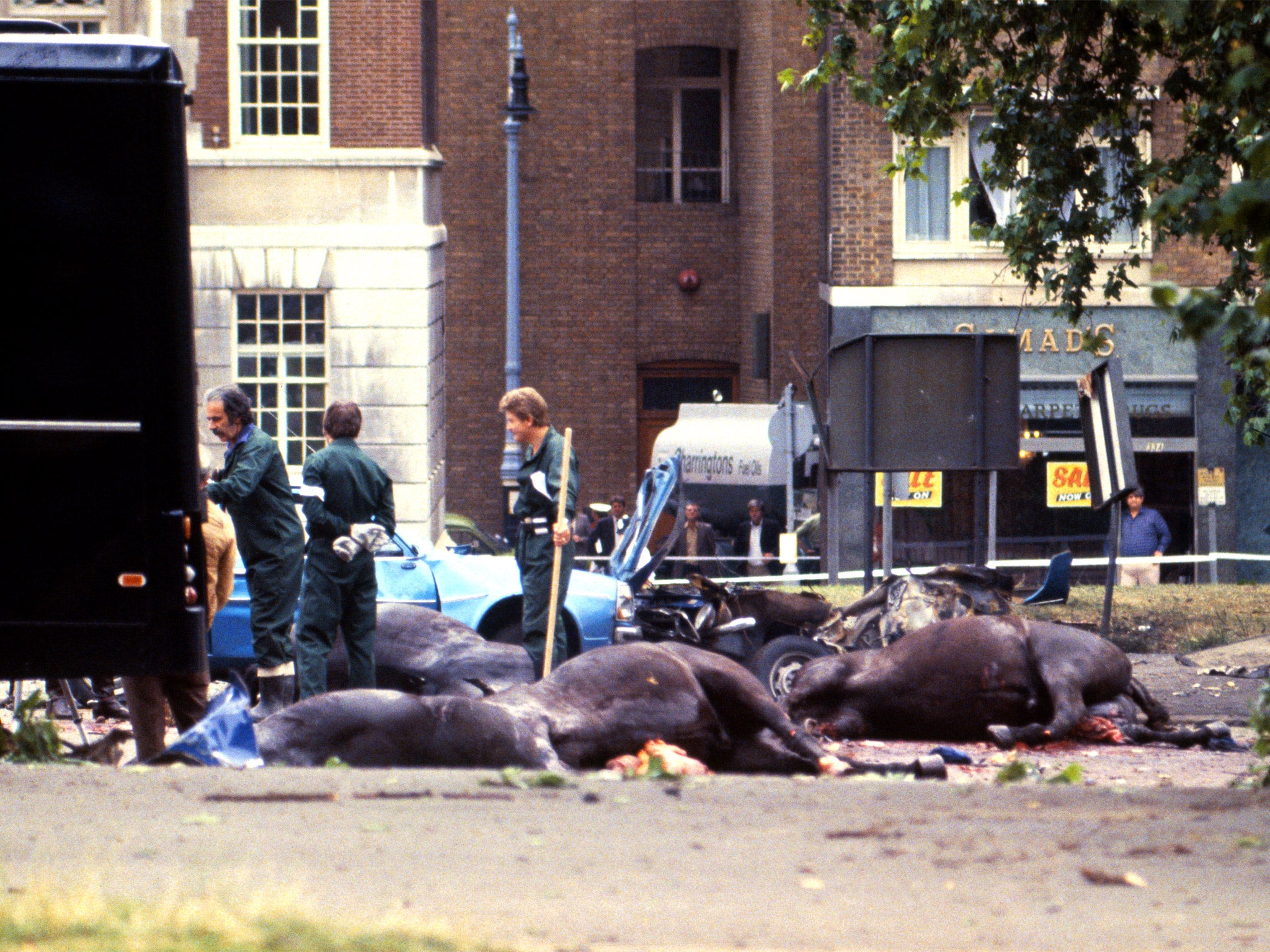In 1982, debris and flesh were scattered around Hyde Park – human and equine
David McKittrick, a reporter at the scene of the attack on the Blues and Royals, on the day Ulster’s bloodshed shook London

Your support helps us to tell the story
From reproductive rights to climate change to Big Tech, The Independent is on the ground when the story is developing. Whether it's investigating the financials of Elon Musk's pro-Trump PAC or producing our latest documentary, 'The A Word', which shines a light on the American women fighting for reproductive rights, we know how important it is to parse out the facts from the messaging.
At such a critical moment in US history, we need reporters on the ground. Your donation allows us to keep sending journalists to speak to both sides of the story.
The Independent is trusted by Americans across the entire political spectrum. And unlike many other quality news outlets, we choose not to lock Americans out of our reporting and analysis with paywalls. We believe quality journalism should be available to everyone, paid for by those who can afford it.
Your support makes all the difference.Although Tuesday 20 July 1982 started out, in my memory, as a fine day, it is emblazoned on my mind as a grim and unforgettable moment when the bloodshed of Northern Ireland’s “Troubles” came to the centre of London on a large scale.
Picture the scene: one moment people in Hyde Park were admiring the sight of a mounted troop of Household Cavalry trotting in military splendour. The solders were taking their usual route to Buckingham Palace to take part in the Changing of the Guard.
Then, without warning, an IRA bomb turned the occasion from ceremonial to carnage. As news reporters like myself rushed to the scene from Fleet Street, police officers, trying hard to stay impassive, held us back.
The military casualties were quickly removed. But long-range camera lenses captured, in dreadful detail, the aftermath with the shattered remains of the car bomb surrounded by dead horses.
For some time, the dead horses lay pathetically in the road, before, in the interests of decency, they were covered with blankets.
As well as the mangled debris, pieces of flesh were scattered around the area. It was impossible to say if they were human or equine: probably both. That famous warhorse, Sefton, recovered from his injuries in time, and lived for more than 20 years.
As London editor of The Irish Times I reported: “The horror of the incident was brought home to the public through gruesome pictures broadcast on lunchtime television showing a scene of carnage and devastation. Eyewitnesses gave graphic accounts of charred bodies, and people and horses with terrible injuries.”
Three of the soldiers were killed instantly, a fourth died three days later. Several dozen people, soldiers and civilians, were treated in hospital. Yet it could have been even worse: it came out at the inquest that the person who detonated the bomb must have known that a woman and a baby in a pram were in the field of the blast. The woman was struck in the leg by an unknown object and passed out, but her baby was unhurt.
The attack created panic locally, coming as it did on a ceremonial occasion in a famous part of London. Traffic was disrupted, the noise of wailing sirens filled the air as ambulance and police vehicles converged.
Then, within two hours, came the noise of a second blast which killed seven more soldiers. That bomb went off as military bandsmen performed a lunchtime concert at a bandstand in Regent’s Park.
An eyewitness described how “suddenly there was this tremendous whoosh and I saw a leg fly past me”. More people were injured in the second blast: the Provisional IRA kept the casualty departments of central London busy that day.
The combined death toll amounted to one of the longest military casualty lists of the terror campaign. London was, understandably, tense for days afterwards.
In the wake of the park bombs a major review highlighted security weaknesses. The Regent’s Park concert had been widely advertised, it emerged, while the Hyde Park route was a well-known tourist attraction.
A Household Cavalry officer was to say later: “We make no secret of the fact, and the whole of London knows, that our guard changes at 11 o’clock. As such we would not be a particularly difficult target for republican organisations.”
Join our commenting forum
Join thought-provoking conversations, follow other Independent readers and see their replies
Comments